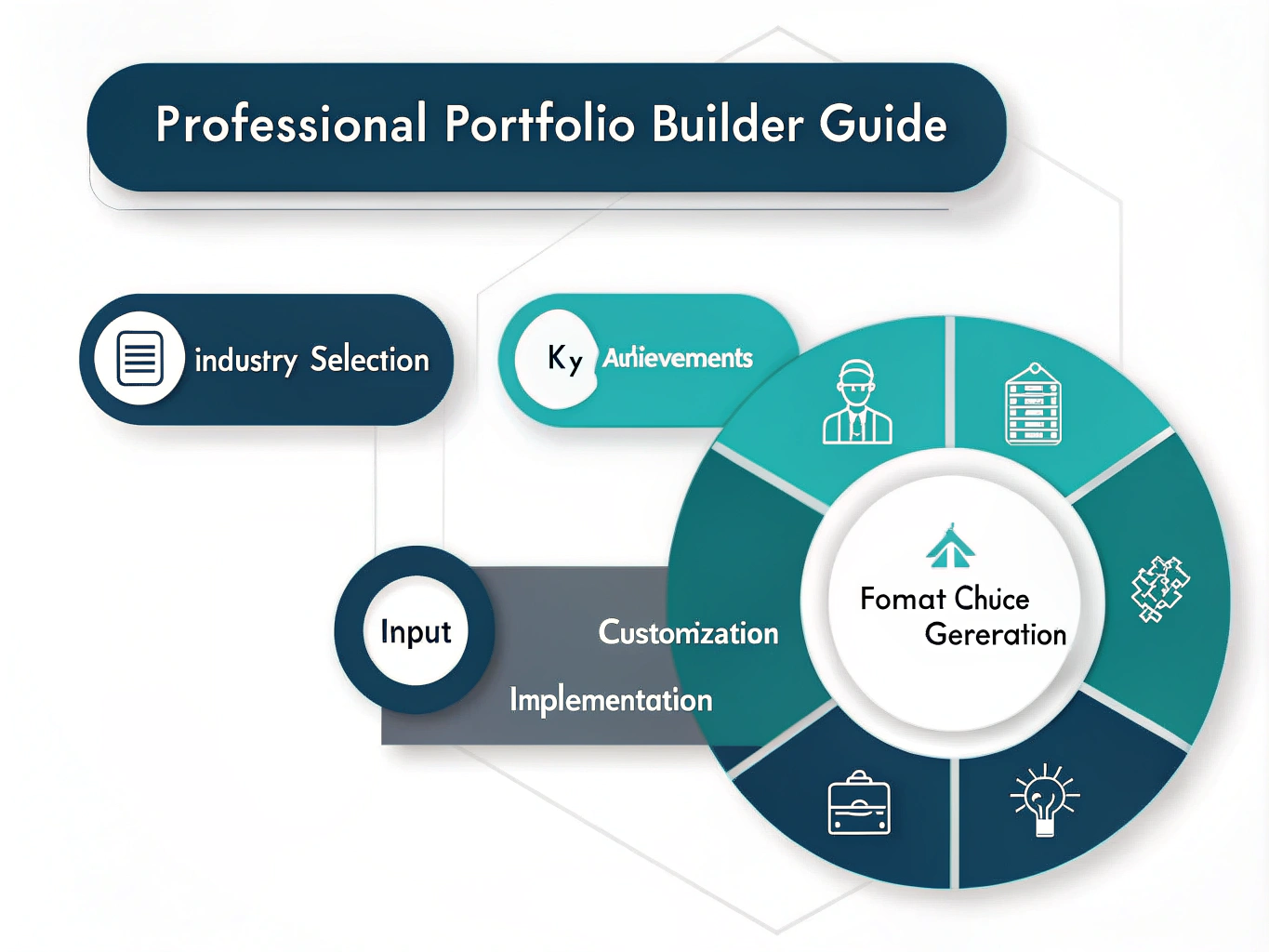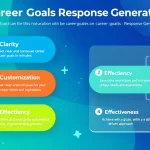Professional Portfolio Builder
Is this tool helpful?
How to Use the Portfolio Builder Guide Effectively
The Portfolio Builder Guide helps you create a professional portfolio tailored to your unique industry and career goals. Follow these steps to get the best results:
- Specify your industry or field: Enter the type of portfolio you want to build. For example, you could input “Healthcare Administration” or “Environmental Science”.
- List your key achievements or projects: Include your most significant accomplishments. For example, you might enter “Managed a hospital-wide patient safety initiative” or “Published research on renewable energy solutions”.
- Choose your preferred portfolio format: Decide if you want a digital portfolio, a physical portfolio, or both. Examples include “Interactive online portfolio” or “Printed portfolio booklet”.
- Click the Generate Portfolio Guide button to receive personalized recommendations for building and presenting your portfolio.
After submitting your details, the guide provides tailored advice covering everything from selecting content to designing a portfolio that stands out in your industry.
What Is the Portfolio Builder Guide? Purpose and Benefits
A portfolio showcases your best work, skills, and achievements in a clear, organized way. It helps you impress employers, clients, or collaborators. The Portfolio Builder Guide streamlines this process by giving you customized suggestions based on your specific career field, accomplishments, and preferred format.
Purpose of the Portfolio Builder Guide
This tool helps you:
- Create a portfolio specifically tailored to your industry standards.
- Highlight your most important projects and skills effectively.
- Choose the right format—digital, physical, or hybrid—for your portfolio.
- Design a portfolio that looks professional and communicates your unique value.
- Prepare to impress different audiences with a portfolio customized for each.
Key Benefits of Using This Tool
- Save time: Follow a clear process instead of starting from scratch.
- Industry relevance: Get advice matched to your career field’s expectations.
- Showcase your strengths: Highlight your unique skills and achievements effectively.
- Format flexibility: Get suggestions for digital, print, or combined portfolios.
- Professional growth: Reflect on your experience and identify areas to improve.
- Boost confidence: Present a polished portfolio that supports your goals.
Practical Applications of the Portfolio Builder Guide
Here are some common ways professionals use the Portfolio Builder Guide:
Entry-Level Professionals Building Their First Portfolio
You just graduated and want to impress hiring managers. Use the guide to organize your academic projects, internships, and volunteer work. The recommendations will show you how to present your experience with clear descriptions and visuals, helping you tell a story that highlights your potential.
Industry Switchers Highlighting Transferable Skills
If you’re changing careers, the guide helps you connect your past achievements to your new field. By inputting your key projects, you get tips on showcasing relevant skills and framing your experience to appeal to employers in your target industry.
Freelancers Creating Client-Focused Portfolios
For freelancers, the guide suggests how to organize your best work by client or project. It also provides advice on creating portfolios that appeal to specific markets, such as corporate clients or creative agencies, and on choosing the right mediums for presenting your work.
Frequently Asked Questions About Portfolio Building
Q1: How many projects should I include in my portfolio?
Focus on quality over quantity. Typically include 5-10 strong projects that highlight different skills. New professionals can showcase 3-5 well-documented projects to demonstrate their abilities.
Q2: Are personal projects good to include?
Yes. Personal projects show initiative and passion. Make sure they’re relevant and professionally presented to support your career goals.
Q3: How often should I update my portfolio?
Review it at least once or twice a year. Add new achievements as soon as they are completed to keep your portfolio current and relevant.
Q4: Do I need both digital and physical portfolios?
It depends on your industry and audience. Many fields now prefer digital portfolios. Physical portfolios remain important in areas like fine arts or architecture. When possible, keep a digital portfolio and prepare key physical samples for meetings.
Q5: How can I make my portfolio stand out?
- Showcase your unique style and point of view.
- Use consistent branding throughout your portfolio.
- Tell the story behind your projects, not just results.
- Use high-quality images and clear, professional layouts.
- Include testimonials and measurable outcomes where possible.
- Customize the portfolio for each opportunity or audience.
Important Disclaimer
The calculations, results, and content provided by our tools are not guaranteed to be accurate, complete, or reliable. Users are responsible for verifying and interpreting the results. Our content and tools may contain errors, biases, or inconsistencies. Do not enter personal data, sensitive information, or personally identifiable information in our web forms or tools. Such data entry violates our terms of service and may result in unauthorized disclosure to third parties. We reserve the right to save inputs and outputs from our tools for the purposes of error debugging, bias identification, and performance improvement. External companies providing AI models used in our tools may also save and process data in accordance with their own policies. By using our tools, you consent to this data collection and processing. We reserve the right to limit the usage of our tools based on current usability factors.







